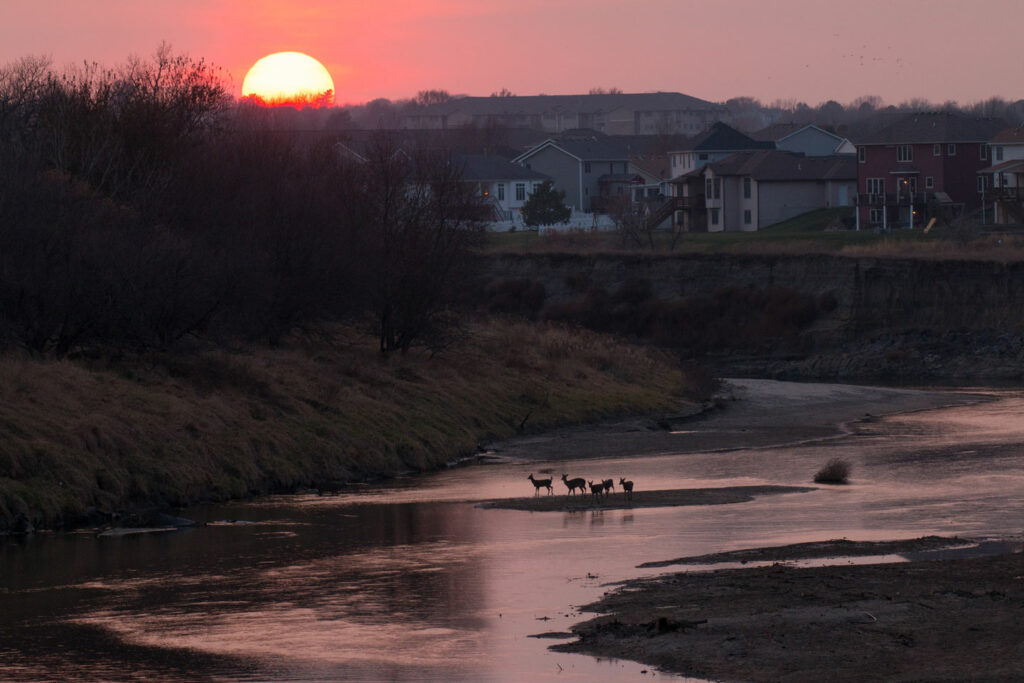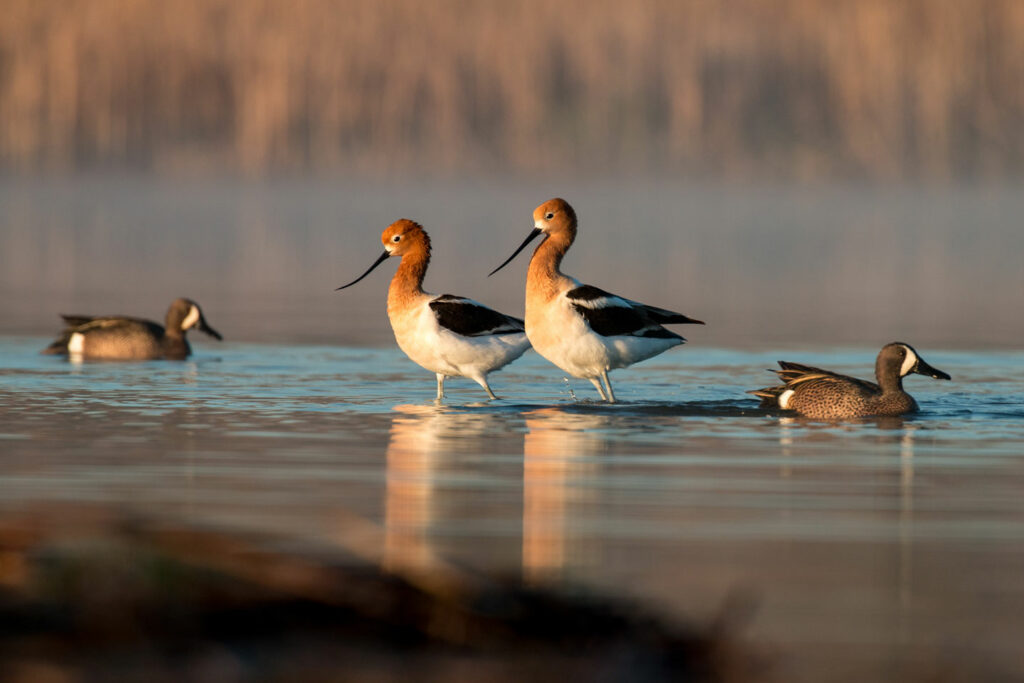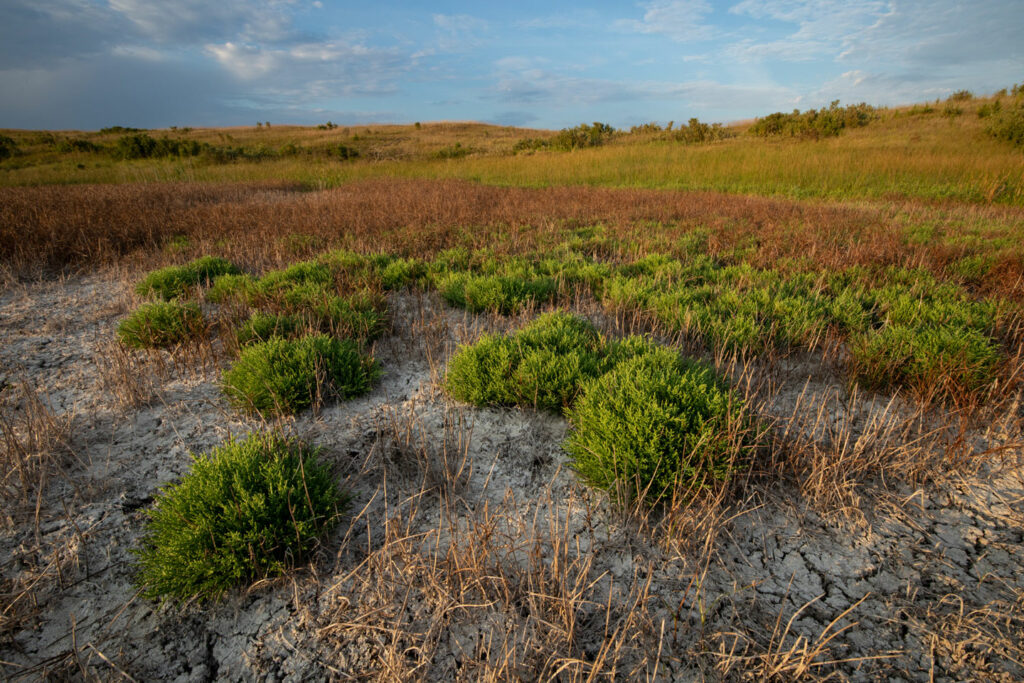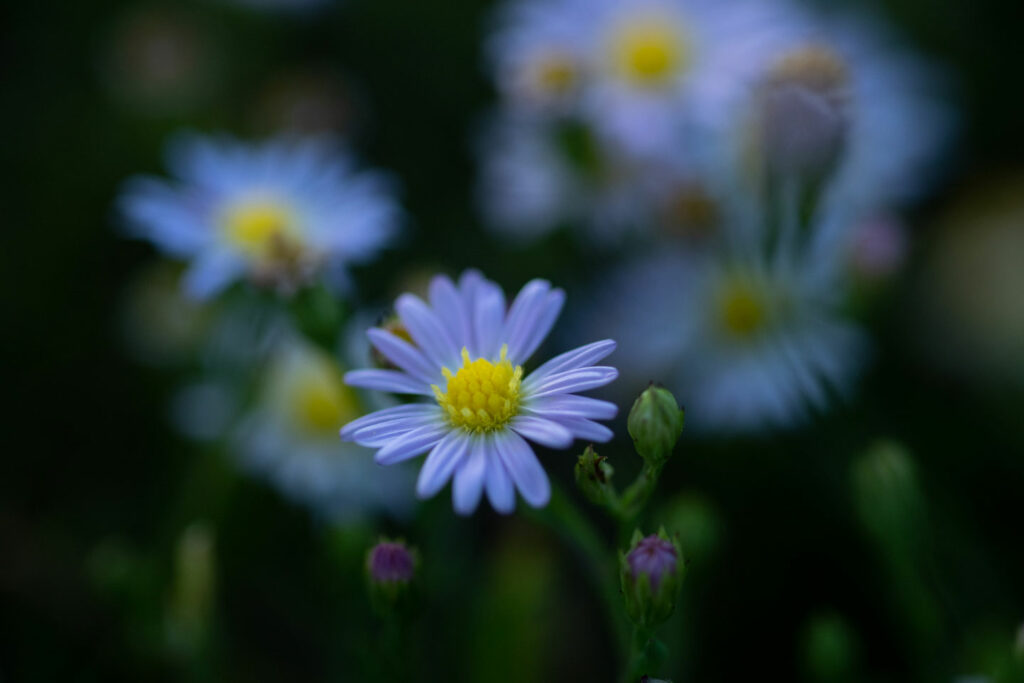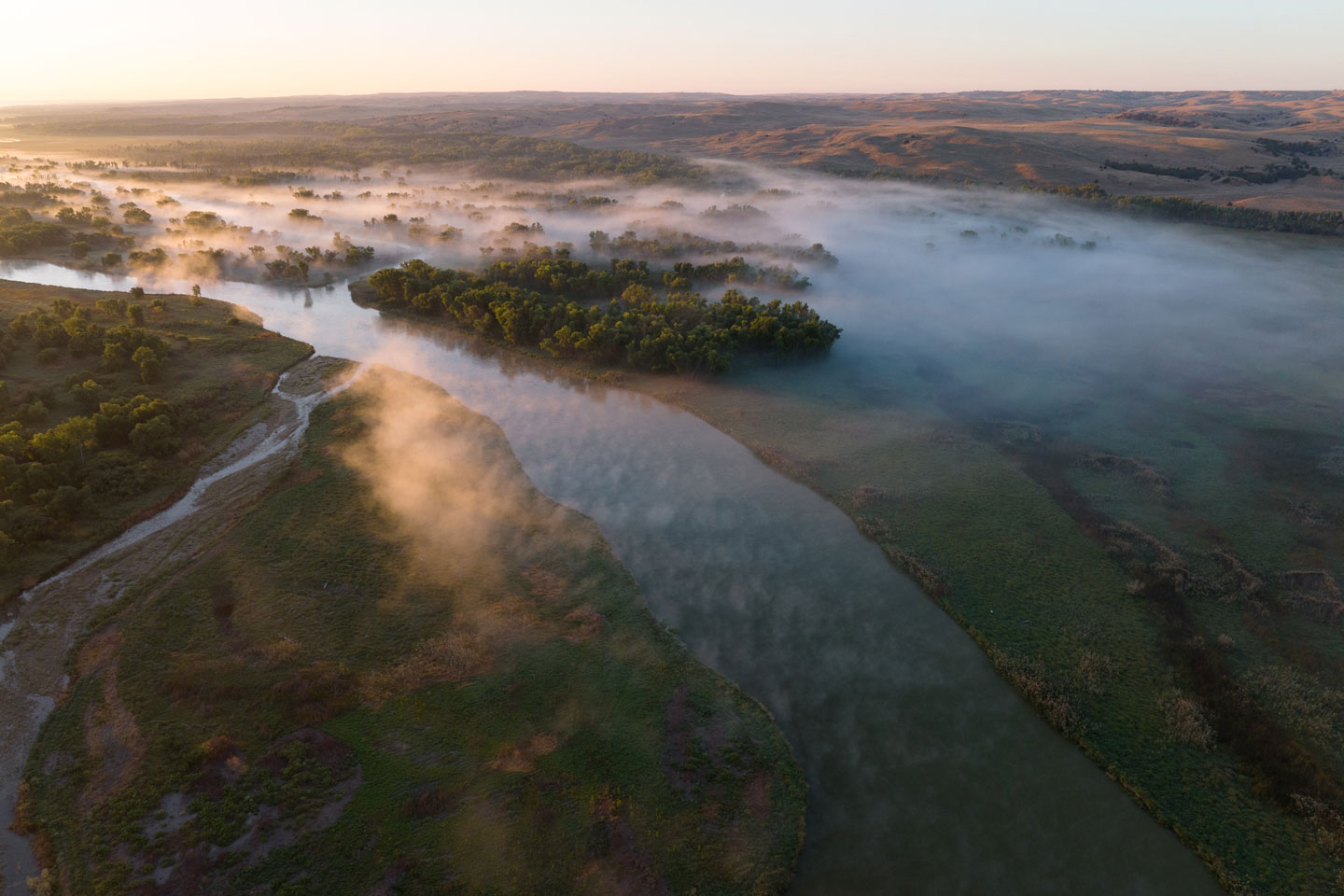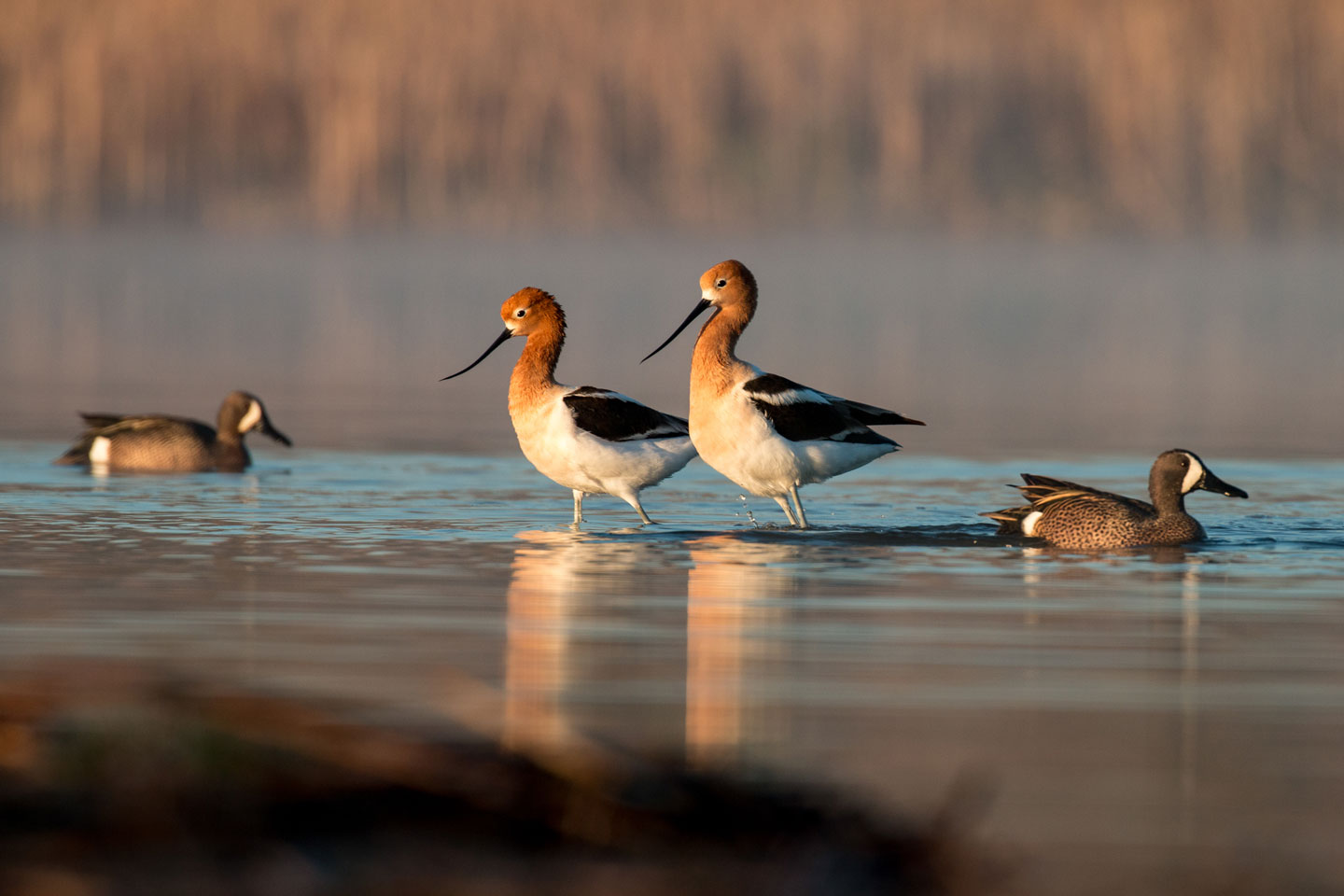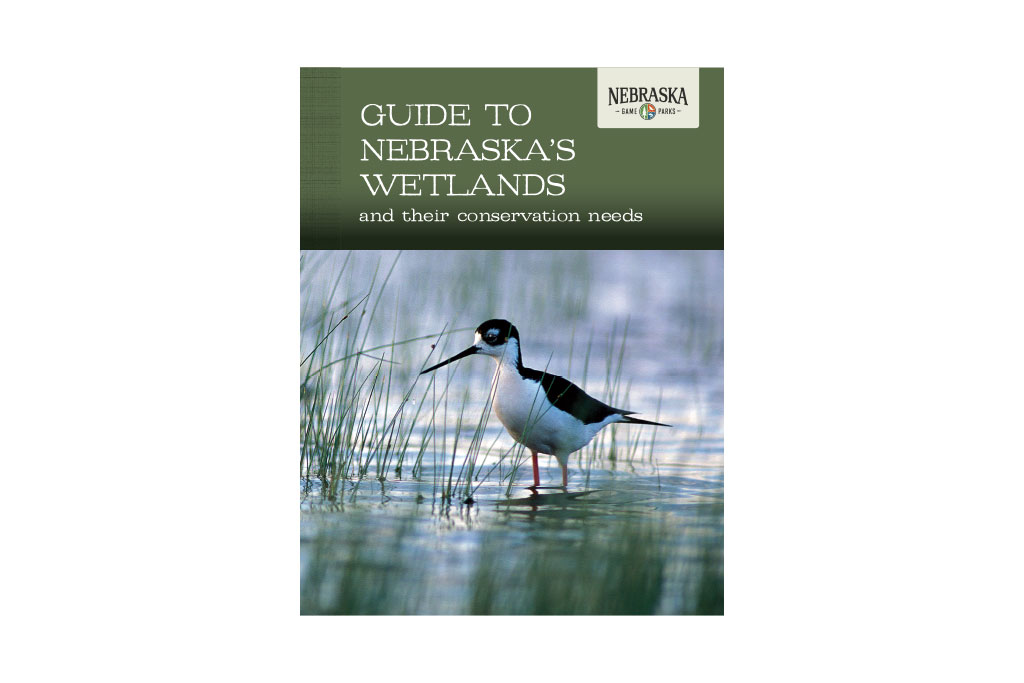Saline and alkaline wetlands
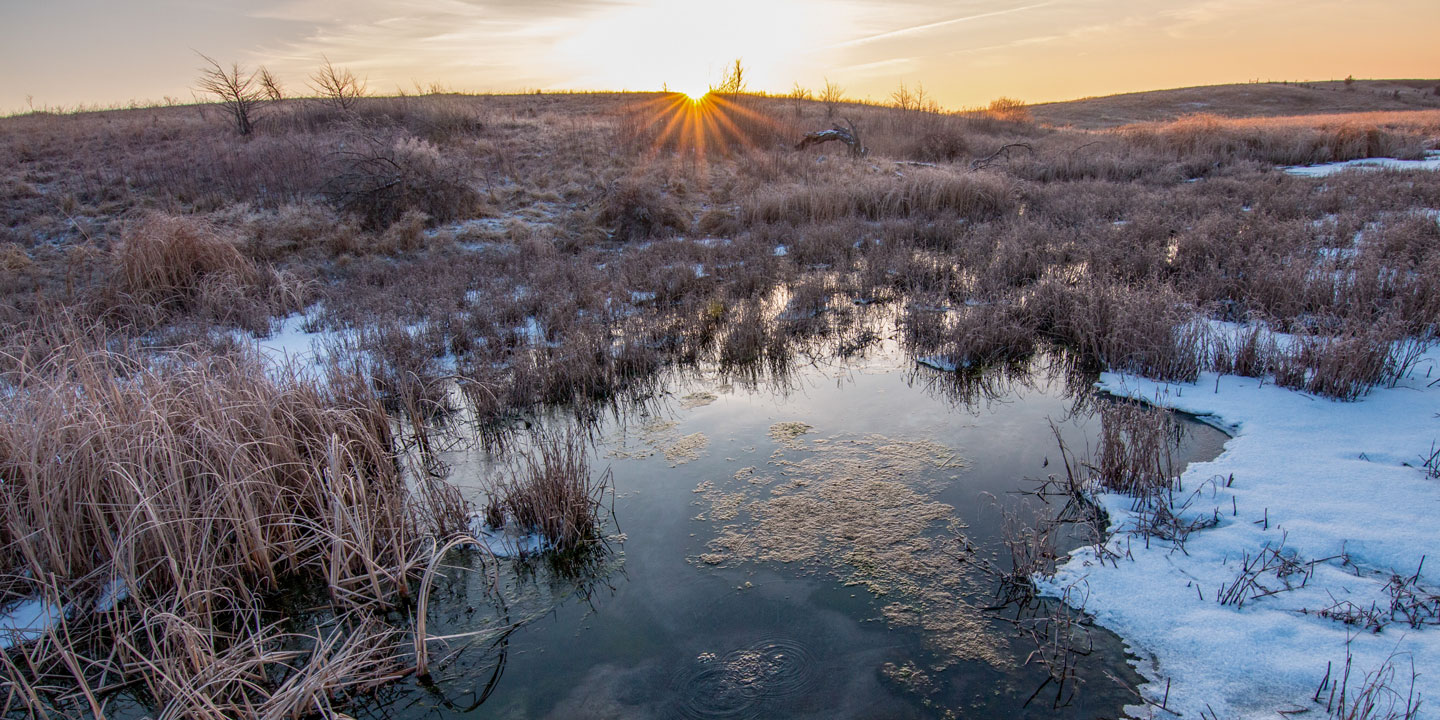
Across Nebraska, several areas are home to saline or alkaline wetlands — wetlands filled with salty waters tied back to minerals that alter their chemical characteristics. The most well-known are the Eastern Saline wetlands near Lincoln and the Western Alkaline wetlands in the North Platte Valley and parts of the western Sandhills. Others, slightly less salty in nature, are scattered in small pockets in other regions of the state.
Though similar, these two wetland types are driven by different minerals that alter their pH levels — a level that determines what types of plants, insects or animals can live there. Eastern Saline wetlands are made up primarily of sulfate and/or chloride-based salts — think table salt — from the groundwater that feeds them. Western Alkaline wetlands are made up of sodium carbonate and calcium carbonate; these wetlands also have limited runoff and limited rain, so the salts don’t leach into the soil as much as they do in the east. Instead, they have accumulated over time, so much so, when the wetlands dry, a visible layer of salt is left at the surface.
Because of these characteristics, these two wetland types offer very different benefits to wildlife, invertebrates, plants and people. The Eastern Saline wetlands are the last habitat in the world to support the Salt Creek tiger beetle, a state and federally listed endangered species. These wetlands also support saltwort, a state listed endangered plant. The alkaline wetlands support seven rare plants to Nebraska and numerous shorebirds.
Watch our saline wetlands film
This documentary explores Nebraska’s saline wetlands, which contain water that is saltier than the sea. Discover the plants and wildlife that live in these wetlands and learn how one community is working to conserve the wetlands for generations to come.
This documentary was produced in collaboration with the Platte Basin Timelapse project at the University of Nebraska-Lincoln by Mariah Lundgren, Ethan Freese, Grant Reiner and Brooke Talbot. Find additional videos, interactive maps, photo galleries of the plants and animals that depend on these wetlands, and a behind-the-scenes look at the making of this documentary online in PBT’s Saline Wetlands Storymap.
Well-known saline wetlands
Eastern Saline
Found near Lincoln, the Eastern Saline wetlands occur in swales and depressions within the floodplains of Salt Creek and its tributaries in Lancaster and southern Saunders counties. They are filled by groundwater that has picked up salt deposited underground, left by an ancient sea that once covered Nebraska and Kansas. The Eastern Saline Wetlands are within the Saline Wetlands Biologically Unique Landscape. Estimates show only 4,000 acres of the original 20,000 acres of saline wetlands remain, and many of those are highly degraded. However, these wetlands play an outsized role in providing the last existing habitat for the Salt Creek tiger beetle, an extremely rare insect. For that reason, about 1,110 acres of the Eastern Saline wetlands have been listed federally as critical habitat for the species survival.
The wetlands also have been listed as critically imperiled in Nebraska for their role harboring rare saline plants — saltwort, saltmarsh aster and Texas dropseed — which are not found anywhere else in the state. In addition to these benefits, these wetlands provide habitat to migrating shorebirds; minimize flooding; support recreation, such as bird watching, nature studying, hiking, and waterfowl and pheasant hunting; and provide educational opportunities for people. Urban expansion is the largest threat to the remaining wetlands, as development can result in their total destruction, which also affects the watershed. Other threats include drainage, filling, streambed degradation, conversation to agricultural use, transportation, water pollution and invasive plants.
Western Alkaline
Western Alkaline wetlands lie along the floodplain of the North Platte River upstream from Lewellen and along the upper reaches of Pumpkin Creek in western Nebraska. These wetlands are filled by a combination of overland runoff, flood overflows and springs, and — as their name suggests — have a high level of alkali or salts in them. They are mostly located within the North Platte River Biologically Unique Landscape.
Waterfowl, shorebirds and other waterbirds depend on these wetlands for nesting and migration habitat. This wetland system is especially attractive to nesting American avocets, Wilson’s phalaropes, cinnamon teal, blue-winged teal, mallards, and Canada geese. They also support several rare plants, including Nevada bulrush, slender plantain, silverweed, eastern cleomella, thelypody, seaside heliotrope and sea milkwort.
In addition to these benefits, the wetlands also provide waterfowl hunting and wildlife viewing opportunities for people.
While fewer of these wetlands have been lost than others systems in Nebraska, these wetlands continue to be threatened by land conversion, irrigation projects, and reduced water flow. Still, an organization of outdoor enthusiasts, the Platte River Basin Environments, Inc., is working to conserve, enhance and restore vital wildlife habitat and natural areas, including the Western Alkaline wetlands.

